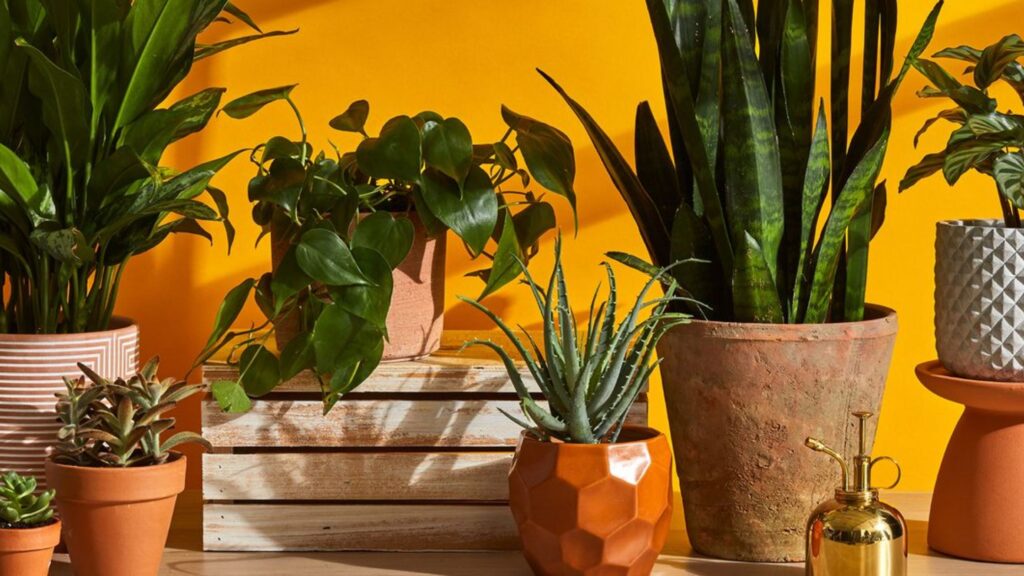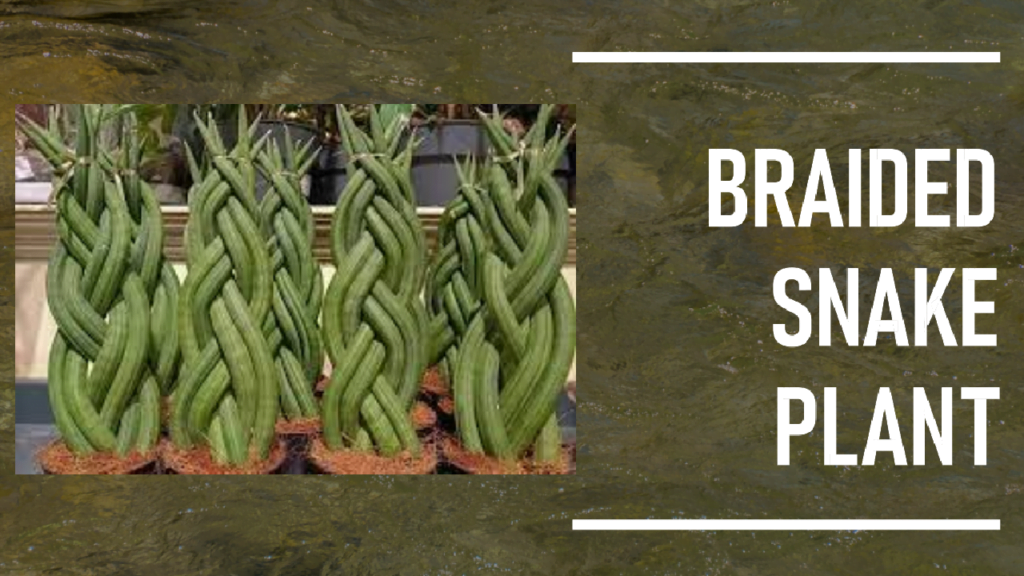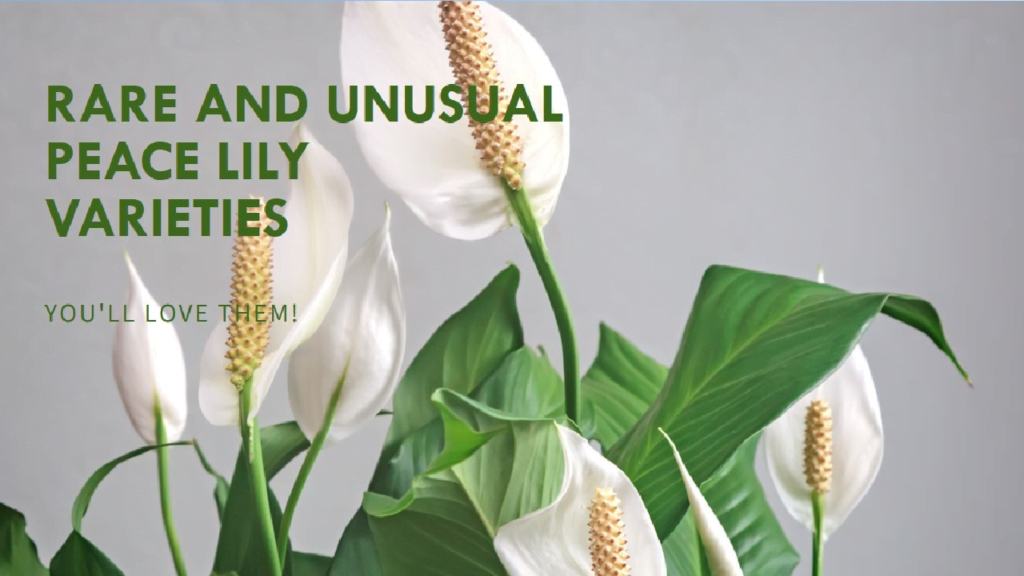A green environment brings enthusiasm and peace into your home. Who could dislike that?
The fresh aroma of grass and flowers are relaxing to the eyes and invigorates the mind. Since it is seldom possible to skip all the work and head to the woods in search of the lush greens, the bustling urban lifestyle and lack of greenery in the center of the cities leave an unfilled hole of greenery in our lives.
By converting their homes into indoor gardens with a choice of minimal maintenance indoor blooming plants and shrubs, city dwellers must find a medium ground. To assist you in creating a beautiful home interior, we have put together this list of the Top 15 Indoor Ornamental Plants.
Best Indoor Ornamental Plants
1. Phalaenopsis Orchid

When you think about indoor flowering plants, orchids are generally the first thing that comes to mind because of their reputation for being fickle. But they’re actually not that tough to grow with the appropriate orchid care recommendations.
The primary step? Use the proper soil, and water the plant only after the soil becomes dry.
2. Oxalis
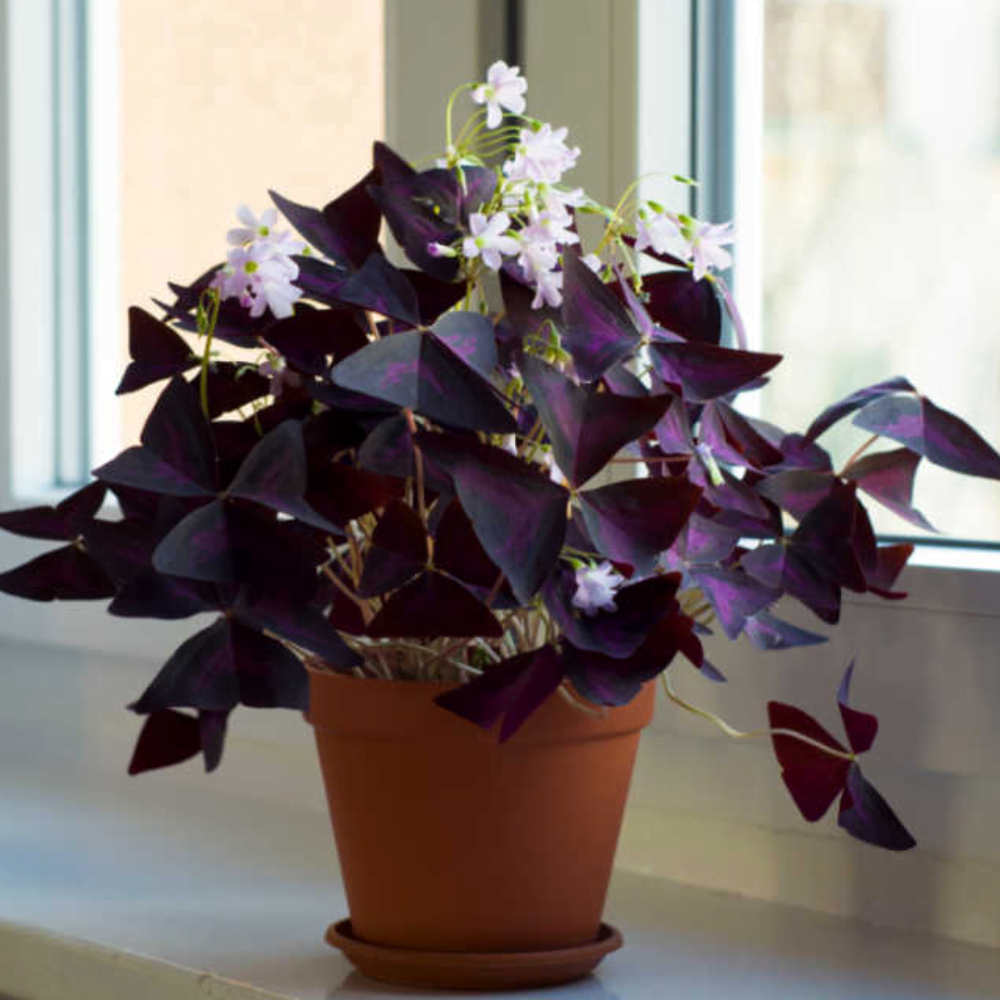
The triangular, clover-like purple leaves of this adorable little plant fold down at night or in low-light situations. Above the foliage, there is an almost continual display of pale pink or white blossoms. There are numerous oxalis cultivars with plain green foliage and those with silvery highlights.
3. Anthurium
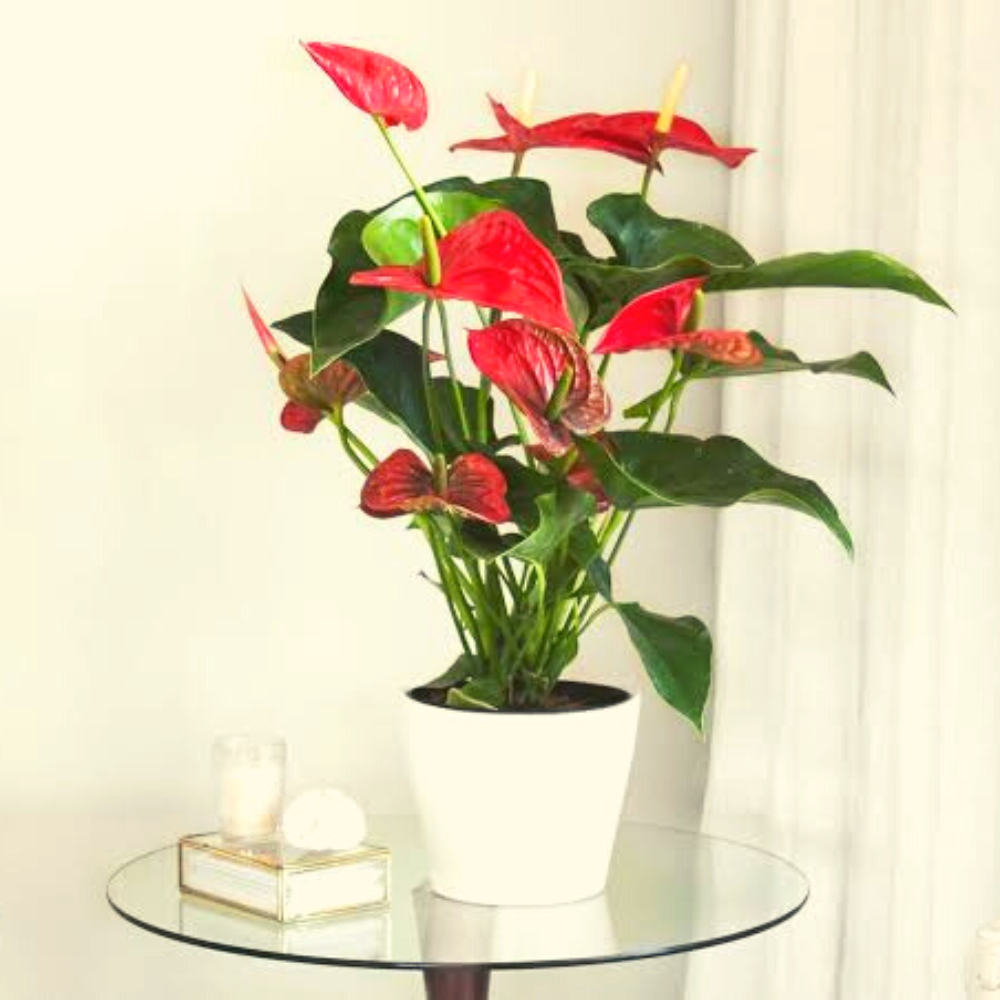
When you think about indoor flowering plants, orchids are generally the first thing that comes to mind because of their reputation for being fickle. But they’re actually not that tough to grow with the appropriate orchid care recommendations.
The primary ploys? Use the proper soil, and water the plant only after the soil becomes dry.
4. Kalanchoe

An indoor plant that stands out is the kalanchoe because of its vibrant blossoms. It thrives in direct sunlight, so planting it on a southwest-facing windowsill shouldn’t be a problem, according to Mast. This plant resembles a succulent, thus it doesn’t require much water.
5. African Violets
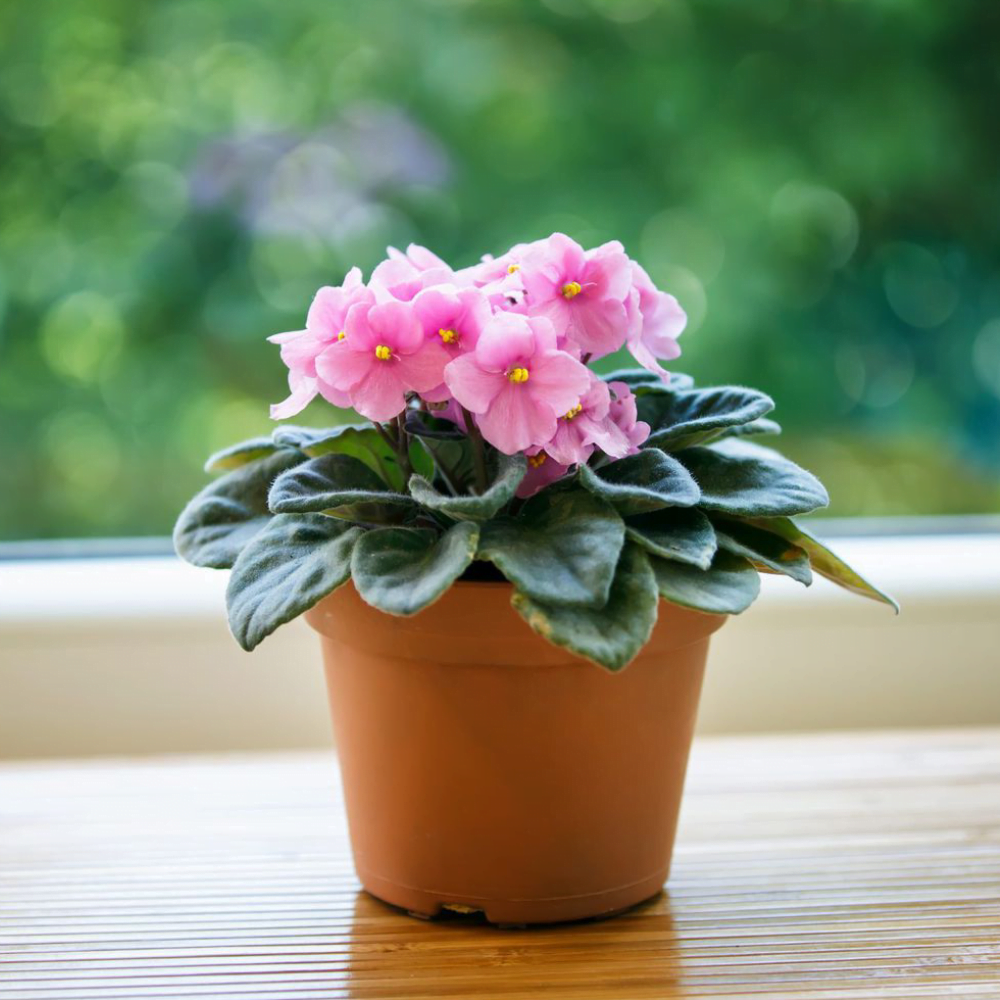
Despite looking a lot like true violets (Violaceae), African violet blooms belong to a distinct genus called Saintpaulia. Since its discovery in the late 1800s, African violet blossoms have maintained a steadfast level of popularity.
6. Christmas Cactus
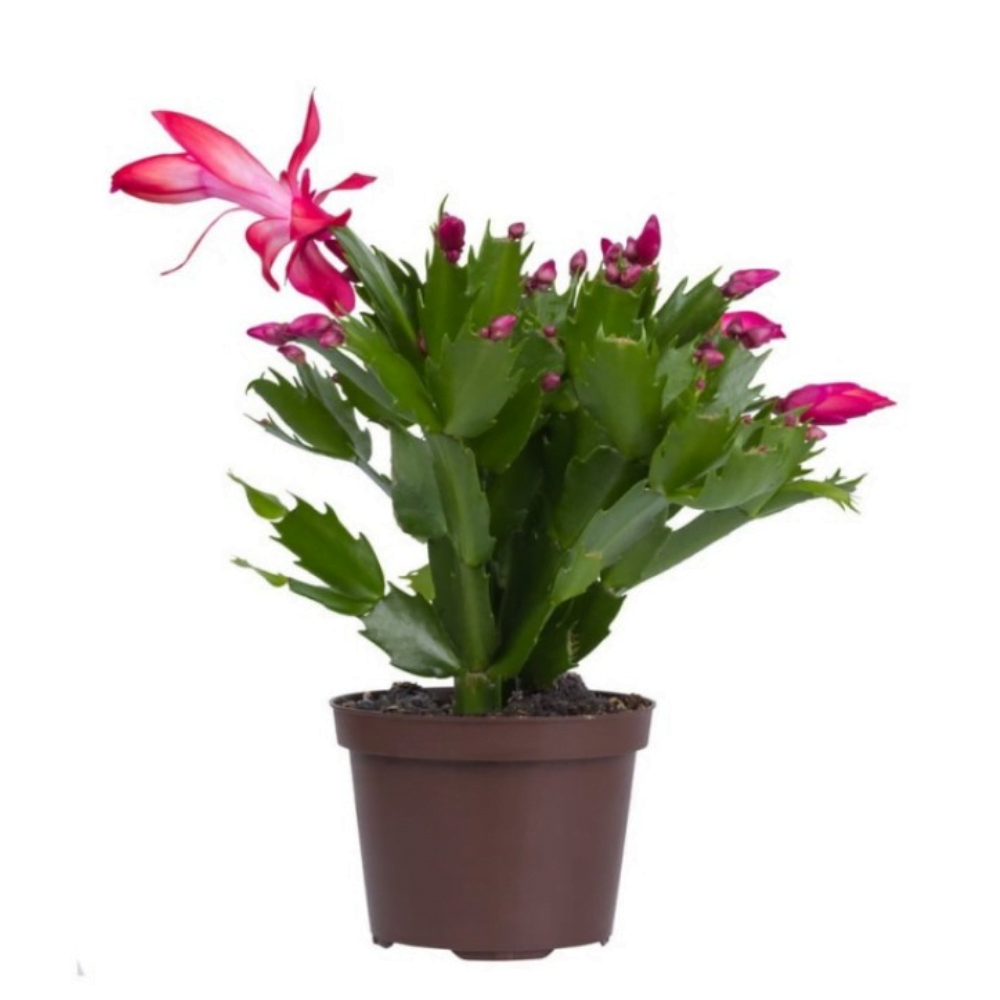
This indoor blooming plant also referred to as the Zygos cactus, has vibrantly colored blooms and a succulent feel.
According to Mast, the Zygos are unusual cacti with long segmented vines that will flow over the pot, making them an excellent choice to place in a plant hanger or on a shelf. They don’t need much water and can withstand full sunlight.
7. Gloxinia
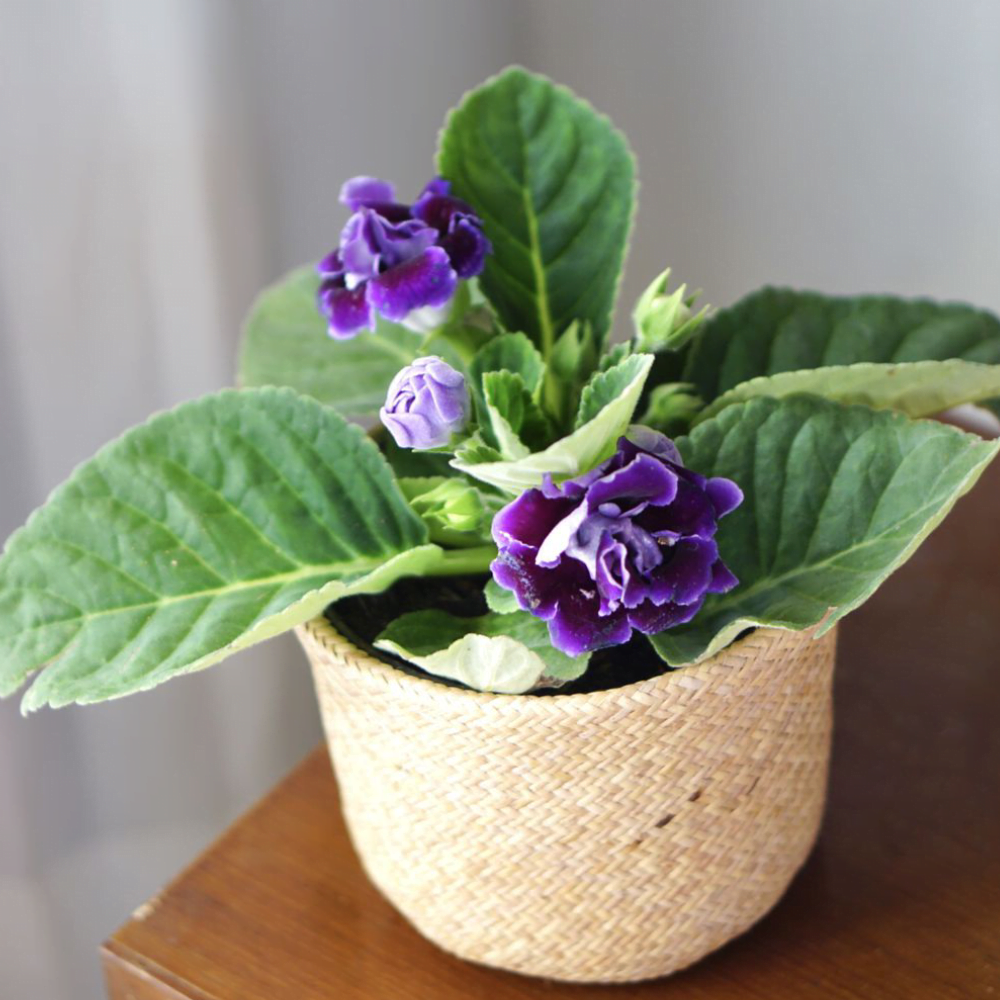
Gloxinia, also known as Sinningia speciosa, is a perennial flowering plant in the Gesneriaceae family. Gloxinias are now frequently grown as indoor and garden plants. They are native to Brazil.
Their big, tubular, or bell-shaped flowers are surrounded by lovely leaves with a smooth, velvety feel, and they reach heights of 15 to 30 cm (6 to 12 inches).
8. Hydrangeas
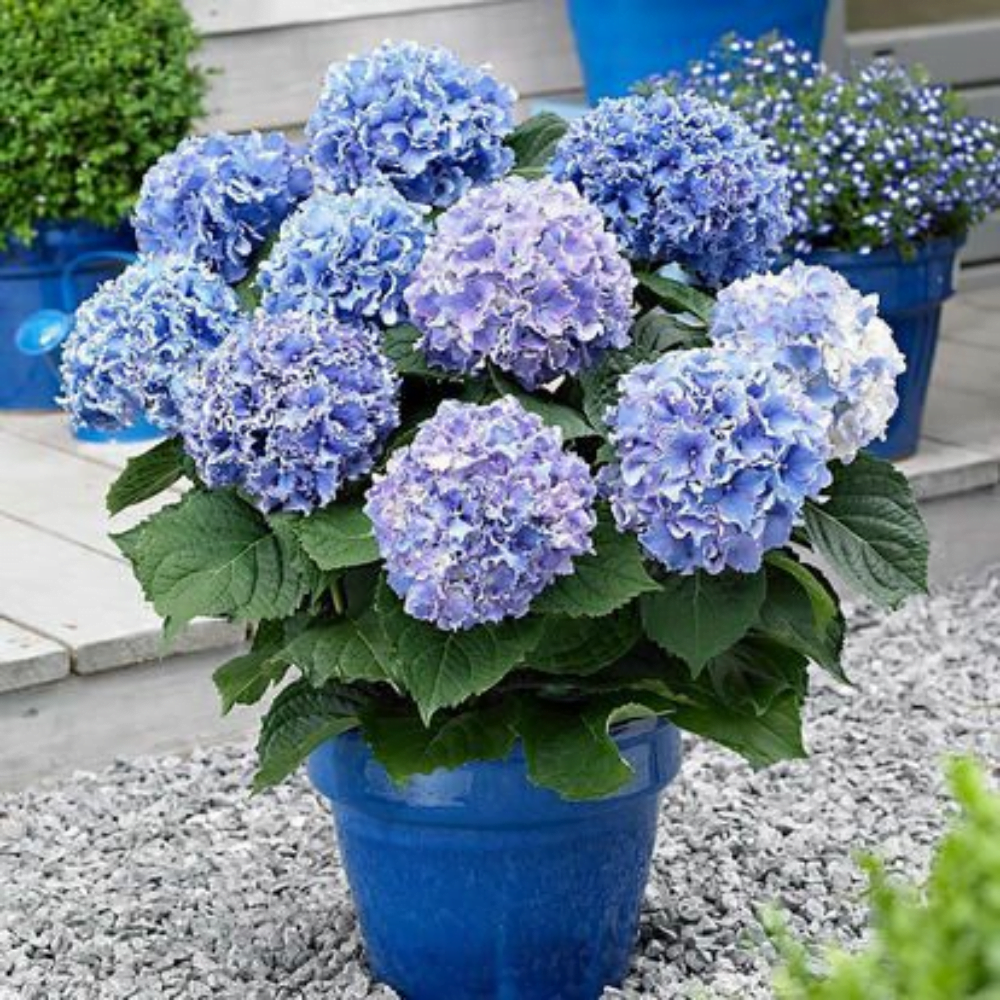
Hydrangeas are a summer garden mainstay, but they can also liven up a corner of your house if potted. They thrive best in full light and moist soil.
If the bloom appears to be sagging, immerse the pot in a sink or bucket filled with two to three inches of water for 45 minutes to allow the soil to absorb moisture through the drainage hole. Allow the water to drain before replacing the saucer in the sun.
9. Begonia

Beautiful Begonia Plants are an excellent choice for any home. Choose a Begonia to simply give life, color, and cheer to your spaces. They grow quickly and are perfect for any indoor room, terrace, or flower bed.
The most appealing aspect of Begonia Plants is the wide range of colors available, making them an excellent choice for any environment.
10. Cyclamen
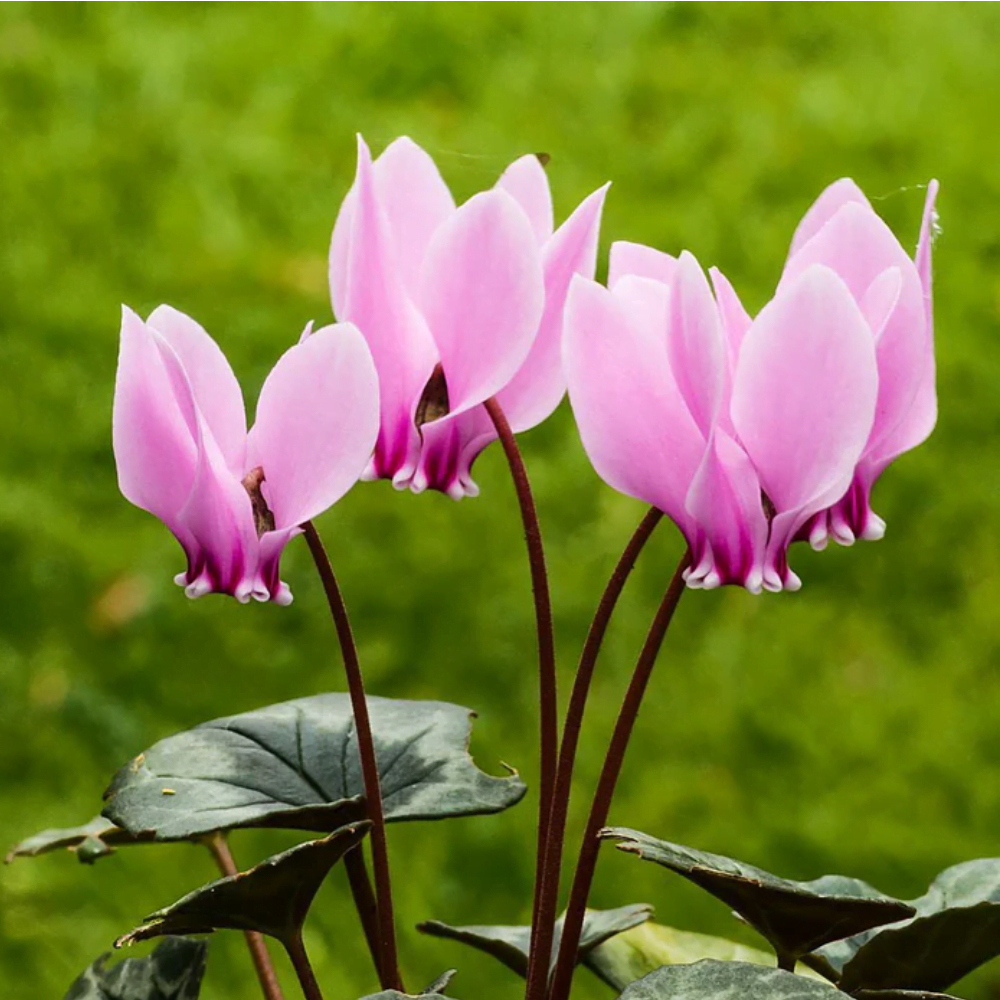
If you’re looking for a plant to liven up your fall and winter, consider cyclamen. Given the correct growing conditions, the stunning, vivid heart-shaped flowers would likely endure around eight weeks. Make sure the soil is moist and that there is no standing water in the pot.
11. Poinsettia

Poinsettia plants are native to Central America and Mexico (botanical name: Euphorbia Pulcherrima). The plant’s leaves are brightly colored bracts, and its flowers are delicate golden cyathia blossoms in the center.
It’s the best-selling house plant throughout the holiday season. Because the leaves spontaneously arrange themselves to resemble the Christmas Star, this plant has been associated with Christmas since the 16th century. As a result, it is commonly utilized in Christmas decorations.
12. Chrysanthemums

If you’re looking for an easy indoor flowering plant, chrysanthemums might be exactly up your alley. They require very little extra care other than keeping the soil moist and ensuring the pot has proper drainage.
13. Dendrobium Orchid
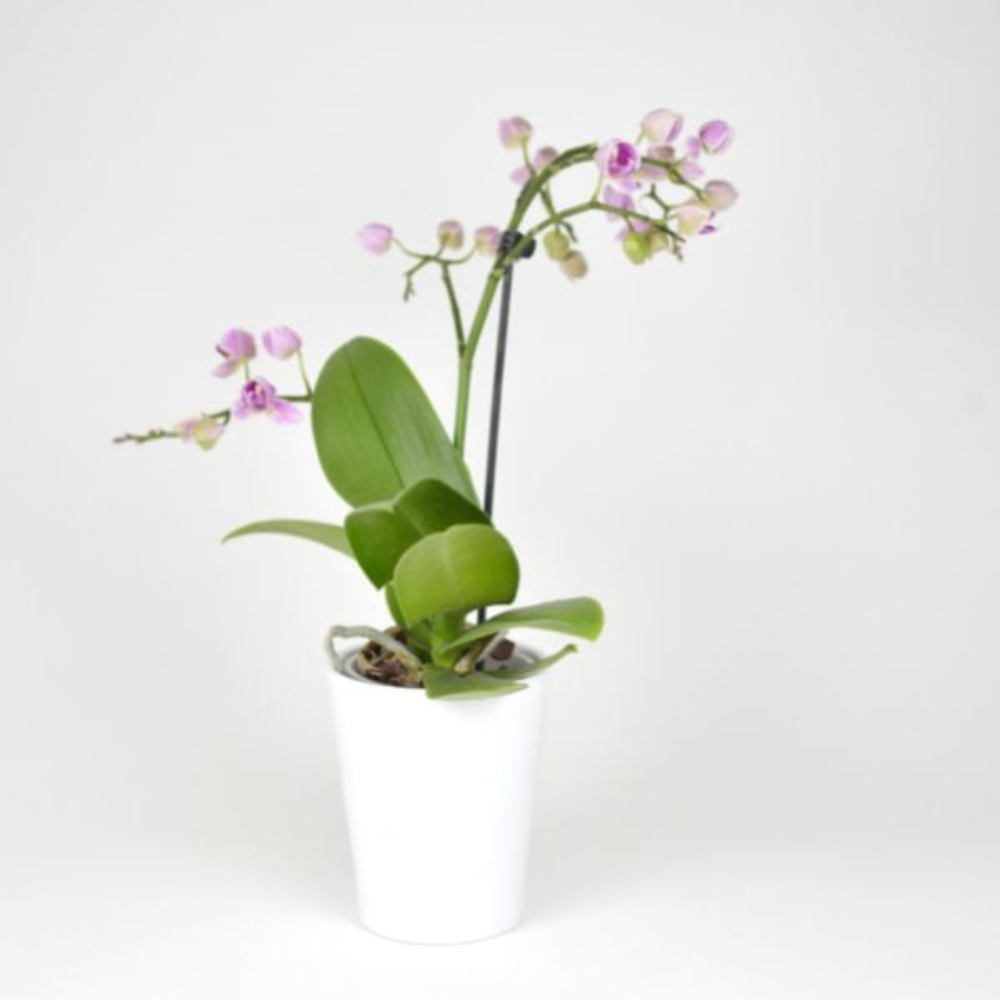
Dendrobium orchids are relatively easy to grow and make nice houseplants, but they can be particular about their surroundings. Thus, paying great attention to their growing conditions is vital for a healthy, well-blooming plant.
14. Clivia

Clivia is also known as kaffir lily. It normally blooms in the winter as a houseplant, with clusters of up to 20 reddish-orange or yellow tubular flowers. Clivia blooms only when exposed to chilly, dry circumstances, so give it lower temperatures and keep it dry throughout the winter.
Best Indoor Ornamental Plants
1. Phalaenopsis Orchid

Phalaenopsis Orchid is one of the traditional indoor flowering plants with a modest maintenance level, making your house look as exquisite as one could ever think. It has long stems of huge white flowers, which seem absolutely attractive and classy; you may arrange it near your coffee or side table.
There are various species of phalaenopsis orchid, a popular flowering houseplant.
Care Instructions
- Avoid overwatering the plant.
- Dry off the crown.
- Keep warm, but away from the sun
- Humidity is crucial.
- Feed well and keep pests at bay
2. Oxalis

Oxalis is the largest genus in the Oxalidaceae family, accounting for over 800 of the 900 species. It is a huge genus of flowering plants with about 550 species belonging to the tropical regions of South America and South Asia.
Oxalis is also known as False Shamrocks and a variety of other common names.
Care Guidelines
- Thrives under bright indirect to bright direct light. Not suitable for low-light conditions.
- Water every 1-2 weeks, leaving the soil to dry halfway down between waterings. Expect to water more frequently in brighter light and less frequently in reduced light.
- Any humidity level will do. Normal room humidity is fine.
- 65°F-85°F (18°C-30°C). It’s preferable not to let it get below 60°F (15°C).
3. Anthurium
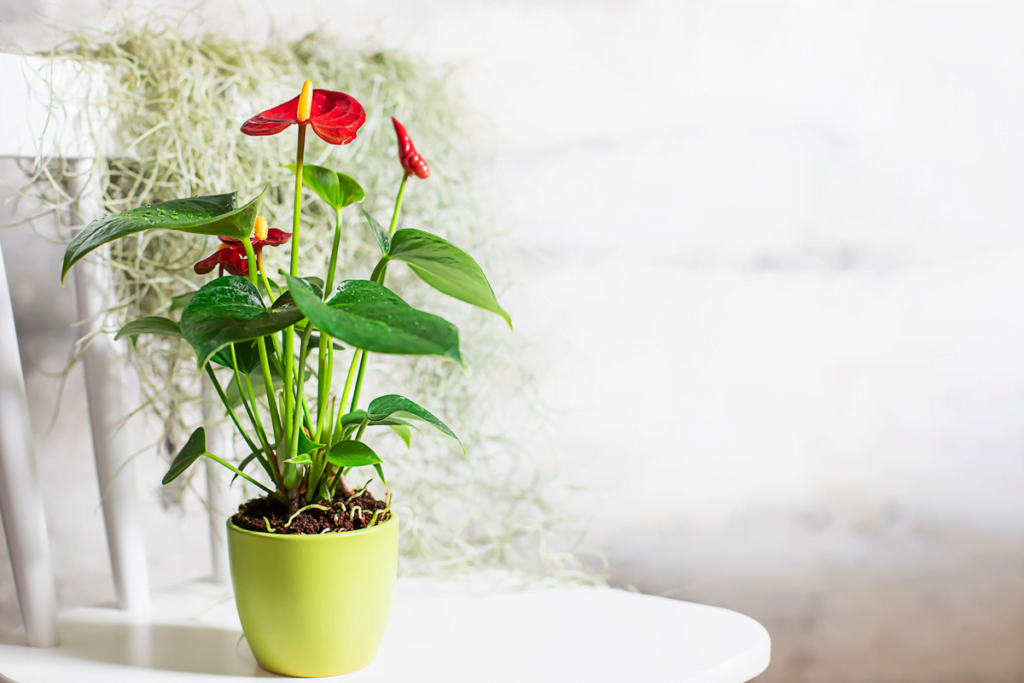
One of the popular indoor plants that are typically grown in colder climates is the anthurium. This plant is at the top of the list of stunning flowering indoor plants and requires just a little upkeep.
Anthurium is a fantastic eye-catcher; its lovely blossoms and foliage are attractive whether it is in your living room or bedroom.
You may set these flowers everywhere in the room, as they delightfully modify the place’s aura, making everyone feel tranquil and pleased.
Care Instructions
- Anthuriums prefer humid environments. Maintain the pot with a weekly water mist or on a tray of wet gravel.
- Maintain a moist but not damp soil. Between waterings, let the top inch or so of soil somewhat dry out.
- Every two weeks in the spring and summer, treat indoor plants with a phosphorus-rich fertilizer.
- Repot the plant every two years or when it starts to get pot-bound.
- Keep cats and kids away from the plant since ingesting plant components can irritate the mouth and upset the stomach.
4. Kalanchoe

Beautiful indoor houseplants called kalanchoe are typically grown in mild or warm winter climates. This plant is widely available and needs little upkeep. Your living room or office will look nice thanks to its thick, dark green leaves and four-petal flowers.
This indoor plant, which comes in a variety of colors including red, pink, magenta, orange, white, and yellow, is a must-have.
Care Instructions
- Being a species that prefers lots of sunlight and soil that drains well, kalanchoe requires little care.
- Where it is grown outdoors, in mild climate zones (10 to 12).
- Kalanchoe requires sandy, well-drained soil to grow; as long as it receives adequate light, it may survive on little water.
- You don’t need to do much to establish the ideal indoor habitat because, in general, it will thrive at temperatures between 55 and 80 degrees Fahrenheit (with the exception of keeping it from frost).
- The kalanchoe plant is generally trouble-free. Spider mites, mealybugs, or powdery mildew problems are possible, but they are extremely uncommon.
5. African Violets
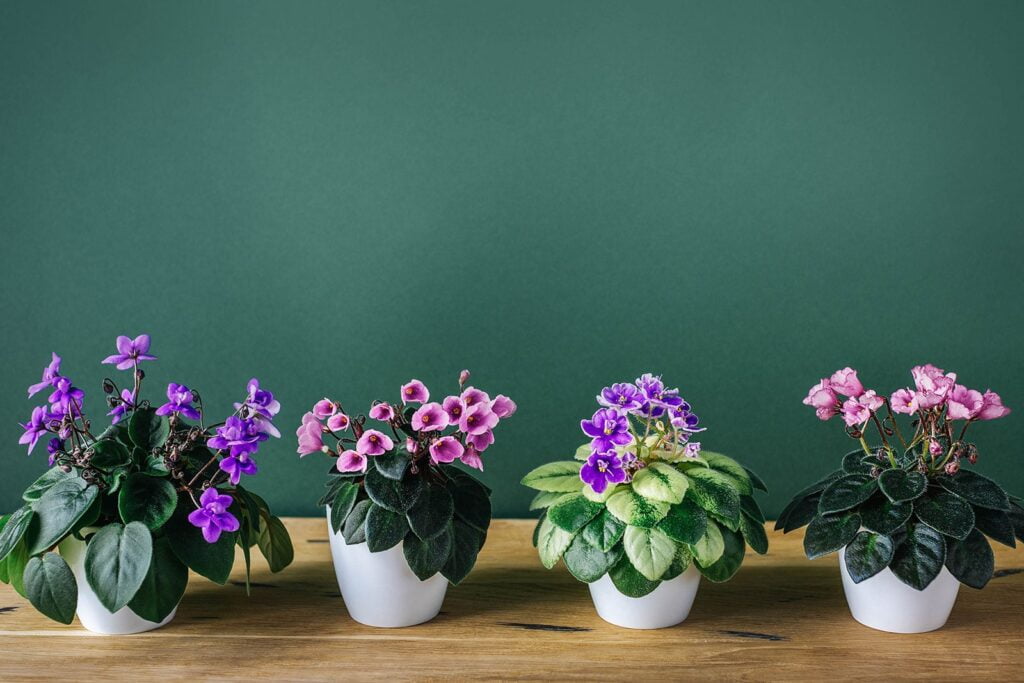
African violets are the greatest option for anyone looking for indoor flowering plants that are simple to care for. These plants produce lovely, fragrant flowers all year long that range in color from white to pastel pink.
African violets can grow exceptionally well and refresh your space and attitude when exposed to filtered sunshine.
Care Instruction
- Maintain a light moisture in the soil, but watch out for overwatering because African violets’ fragile stems are highly prone to rot.
- Use room temperature water instead of chilly water because the leaves may become marked.
- Bright, indirect light is preferred by African violets. Keep them at least a few feet away from bright south or west-facing windows and stay out of direct sunshine. The greatest illumination for them comes from a window that faces east or north without endangering the delicate leaves.
- Use a high phosphorus plant food to fertilise every two weeks during the active growing season (spring and summer). Only begin fertilising when it looks that the plant requires an extra push (slow, thin growth; pale or yellowing leaves).
6. Christmas Cactus
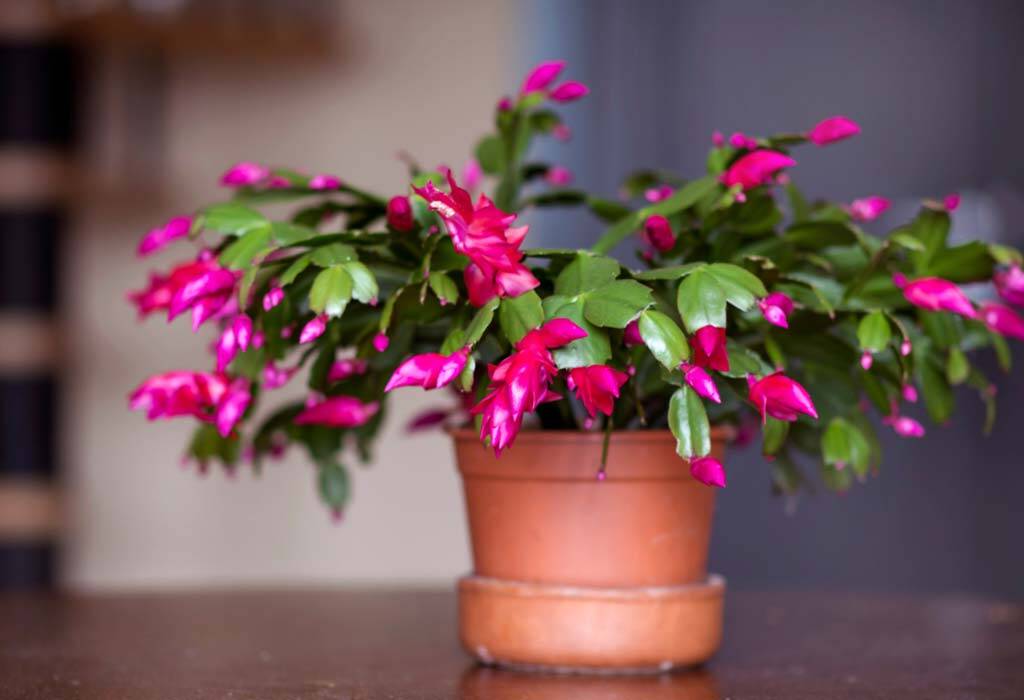
Christmas cactus is among the best indoor flowering plants. This fashionable flower plant looks great indoors, whether it’s at your house or business. It will grow properly if you place it near a window where it will be exposed to both direct and indirect sunlight.
These pink-red blossoms of the Christmas Cactus are quite stunning when grown beautifully.
Care Guidelines
- It is ideal for the daytime temperature to be 70°F (21°C) and for the evening temperature to be 60–65°F (15–18°C).
- Watering should only be done until the top third of the soil feels dry to the touch, which should occur every two to three weeks.
- Use a balanced houseplant fertiliser every two weeks from early spring through early fall. Feeding the cactus regularly during the fall and winter can help it bloom successfully.
- Plants should be pruned in the late spring to promote branching and more flowers. Just trim a small portion of each stem; the plant will branch from the wound.
7. Gloxinia
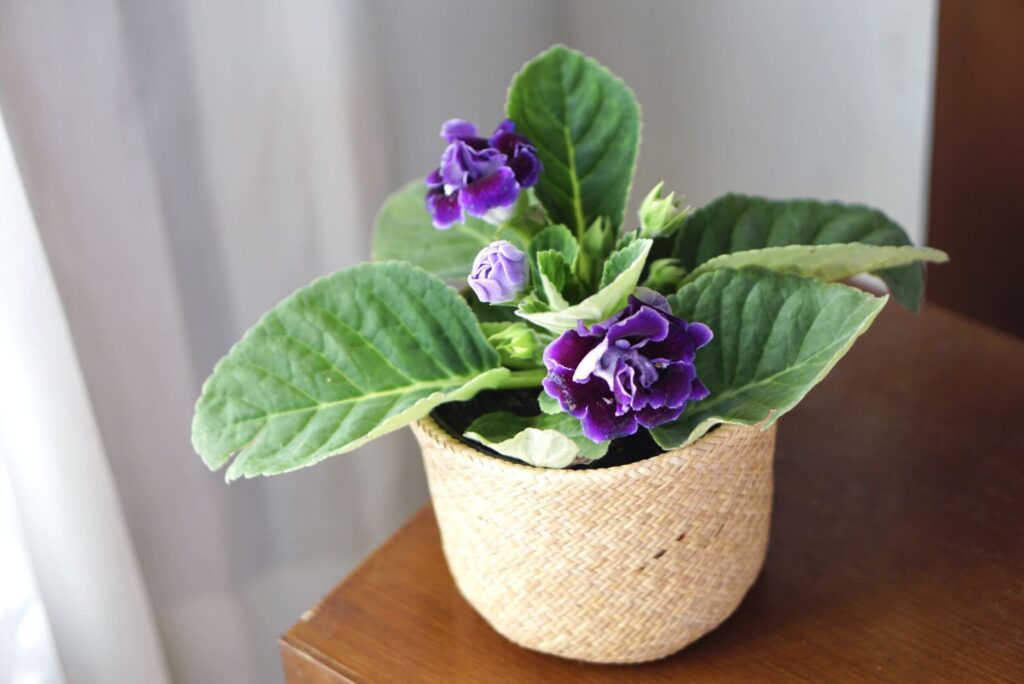
Gloxinia is the ideal option for anyone looking for a lovely indoor garden that requires no upkeep. After a while, these well-liked perennials come back with stunning velvet blossoms.
The main maintenance procedure for gloxinia is to keep it fresh till it blooms.
Care Guidelines
- Your plant should be placed in a well-lit area with some indirect sunlight. Keep the temperature of your gloxinia plant between 60 and 75 degrees Fahrenheit (16 to 24 degrees Celsius) if you are growing it indoors.
- Use a loose, well-draining potting mixture that is moderately acidic.
- The significance of comprehending your plant’s watering requirements cannot be emphasised enough. Too dry or too wet conditions are intolerable to the gloxinia plant.
- Use calcium nitrate fertiliser occasionally in place of peat-lite fertilisers on your gloxinia plant. You can also attempt controlled-release plant food. They will provide your gloxinias with essential vitamins and nutrients.
8. Hydrangeas

Hydrangeas are almost everywhere, but they require some attention to blossom into the large blooms we know and love. These lovely, rich blossoms are timeless, whether in a vase, blooming in the backyard, or flourishing in a planter.
Care Guidelines
- A surplus of shadow can hinder blossom production. Tall deciduous trees that give partial shade are ideal for growing hydrangeas since they supply them with morning sun and cooler afternoon temperatures.
- Pink blossoms grow in neutral to alkaline soil with a pH of 7.0 or higher, whereas blue flowers grow in acidic soil with a pH of 6.0 or lower.
- Give your hydrangeas a good drink of water once or twice per week because they require constant moisture during the growing season.
- The ideal temperature for hydrangeas is moderate. If the hydrangea is situated in an unprotected place or one that receives too much winter sun, dieback may be a concern in regions with extremely cold winters.
9. Begonia
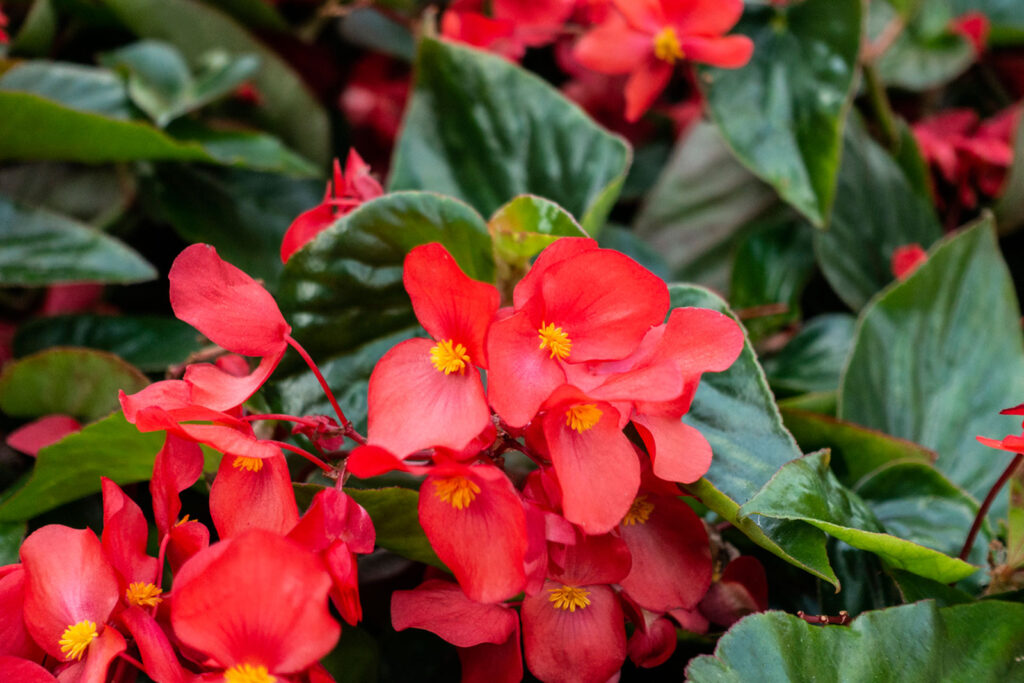
Begonias are tropical and subtropical plants. These common indoor house plants grow in an asymmetrical arrangement. Begonia can bloom beautifully in indirect sunshine, giving your room an attractive aspect.
Begonia plants bloom in a variety of colors, including yellow, red, pink, orange, and others, and often have smaller flowers.
Care Guidelines
- All begonias want evenly moist, freely draining soil that has some organic matter added to it.
- Plants need regular watering to be healthy. Always keep the soil moist, but not soggy, as this might lead to root rot. To keep the foliage dry and avoid leaf spot and fungus illnesses, water the plant’s base.
- Too much water is the easiest way to kill a begonia. Allow them to somewhat dry out in between waterings. You could observe that they can go longer without water if kept chilly. Place the pots in a pebble tray to increase their humidity.
10. Cyclamen

Cyclamen persicum, often known as florist’s cyclamen, is typically grown in pots indoors. It dies over the summer, but with appropriate care, it will regenerate and bloom again in the fall.
Care Guidelines
- In the winter, when the plant is actively growing, provide strong, indirect light.
- Cyclamen grows best in organically rich, well-drained soil with a slightly acidic pH.
- A common method for watering cyclamen is to place the pot on a tray and then wet the tray so the roots can absorb the moisture.
- Extreme heat, draughts, or dry air are not favourable to cyclamen plants. They thrive in a climate that closely resembles their natural habitat, favouring nighttime lows of 40 to 50 degrees Fahrenheit and daytime highs of 60 to 70 degrees.
11. Poinsettia
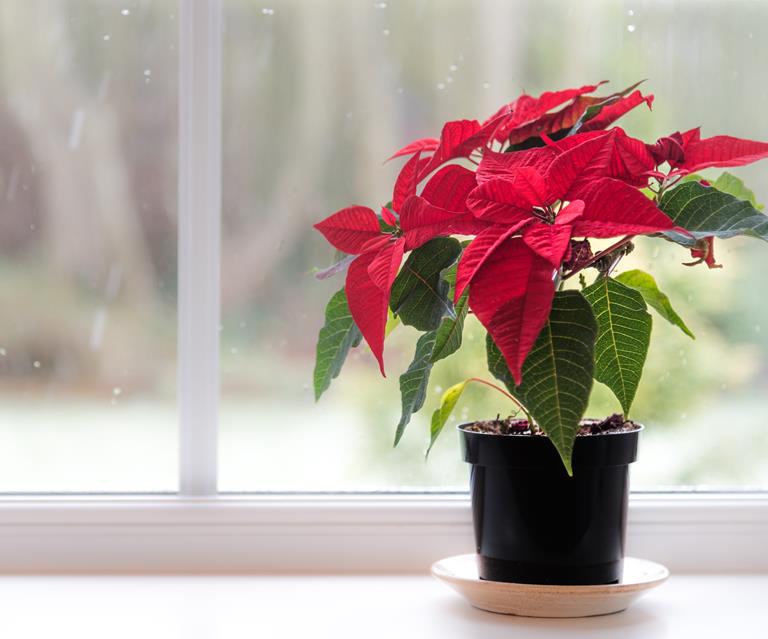
It is one of the most gorgeous indoor flowering plants in the Euphorbiaceae family. It is a common houseplant that produces a gorgeous array of vivid red blossoms, brightening up your living space. These plants can be cultivated simply inside a container or planter.
Poinsettia thrives in semi-cool climates and can bloom for weeks with proper care.
Care Guidelines
- A temperature range of 65 to 70 degrees F is excellent inside.
- When the soil surface feels dry to the touch or the pot appears light when lifted, water the plant. Never let your poinsettias dry out to the point of wilting.
- when you notice fresh growth, begin fertilising your plant (new green leaves, stems, bracts). Use a household plant fertiliser that is all-purpose to fertilise.
12. Chrysanthemums

Care Guidelines
- Planting chrysanthemums in the spring gives them the best chance of surviving the winter.
- Mums require frequent watering because of their shallow root system, which is especially important in hot weather. In the summer, a covering of mulch will help conserve water and keep the soil moist and cool.
- To encourage branching and a stronger plant, pinch approximately 1 inch from the branch tips two to three times during the growing season.
- Mums are not heavy feeders, therefore a dilute fertilizer should be applied many times before bud set.
- Avoid overcrowding and extremely shaded settings, which allow moisture to accumulate on the leaves and give a breeding ground for illnesses.
13. Dendrobium Orchid
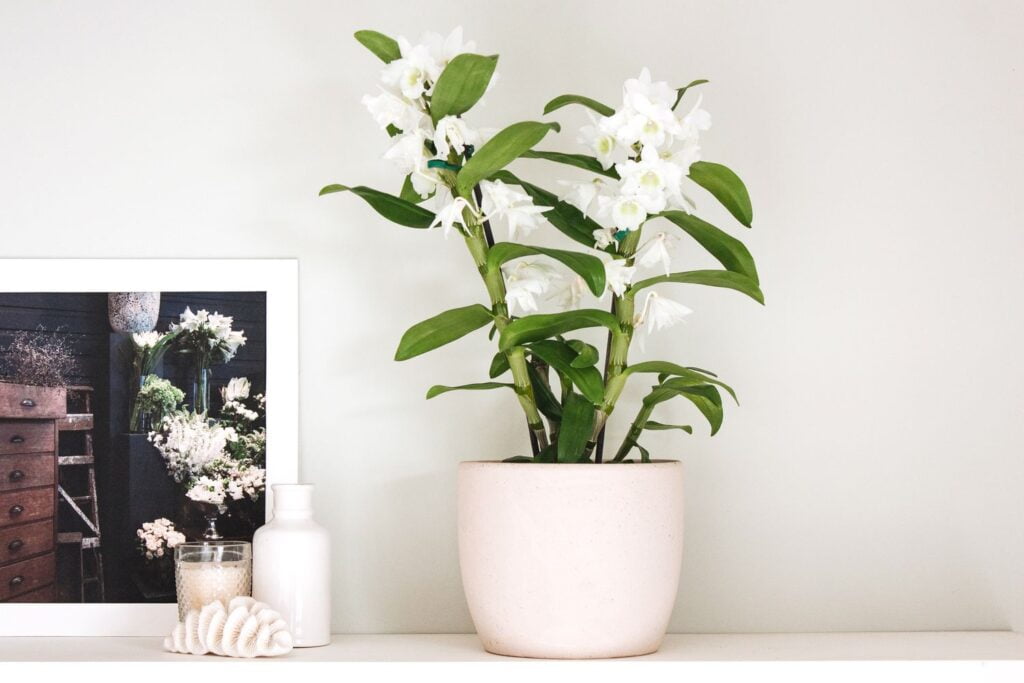
Beautiful indoor plants from the orchid family include dendrobium orchids. These plants are unquestionably among the most popular blooming plants in the world, whether they are grown indoors or outdoors.
The magnificent Dendrobium orchids are available in a variety of colors, including orange, red, violet, yellow, and pink.
Dendrobium orchids are Southeast Asian natives with heavy blooming, making them ideal for use as indoor flowering plants in urban areas.
Care instructions
- In their natural habitats, these plants thrive in filtered sunshine. However, to bloom properly indoors, they’ll probably need to be next to your brightest window, preferably a south-facing window.
- Instead of growing in regular potting soil, orchids require a unique mixture that closely resembles their natural habitat.
- These plants prefer moisture during the growing season, but they shouldn’t be left in a wet media. Overwatering can result in root rot, which can eventually cause the plant to wilt or turn yellow.
- Dendrobium orchids prefer warm climates and thrive in conditions with daily highs of 70 to 85 degrees and overnight lows of 10 degrees.
- Follow the directions on the packaging when feeding balanced orchid fertilizer on a regular basis during the growing season. Reduce fertilizer by roughly 50% at the end of the growing season.
14. Clivia
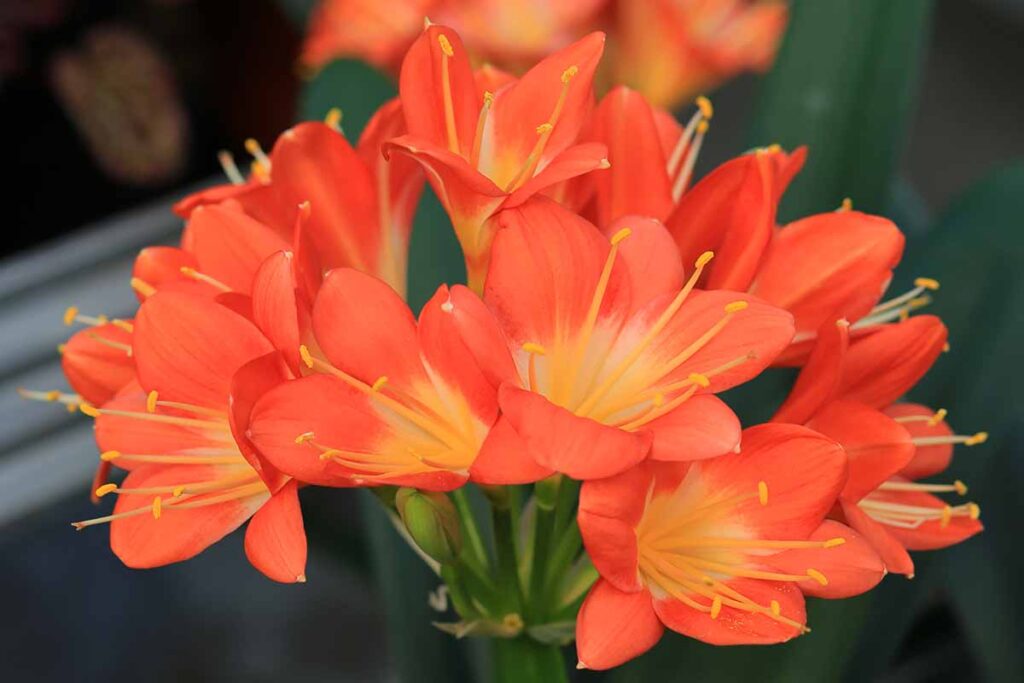
Clivia is a flowering plant genus native to South Africa famed for its beautiful blooms that bloom in brilliant warm colors.
Care Guidelines
- Only water your clivia plant when it requires it. Overwatering is bad for clivia plants since it can lead to root rot. To make sure your plant is not waterlogged, let the soil completely dry out in between waterings.
- Apply fertilizer to your plant as food. Clivia plants benefit from being fertilised with organic matter. Feed your clivia plants once a month.
- Warm up your plants in the winter. Bring any outdoor plants inside throughout the winter if you live somewhere cold. During this period of winter rest, don’t water or feed your plants.
Conclusion:
Indoor flowering plants are one of the newest urban trends. People want to be plant parents now more than ever, and they spend a lot of time looking for beautiful and easy-to-grow plants to decorate their homes.
We carefully examined the most popular flower varieties that may be cultivated easily at home.
Let us know in the comments below which is your favorite indoor ornamental plant.
Related Articles
- 15 Best Plants for Front Door Entrance India | Auspicious plants for front door
- 10+ Money plant Benefits That Will Make you Keep It In Your House
- Are Spider Plants Toxic to Cats?- 4 Ways To Prevent Your Cats From Eating Spider Plants.
- Best Plants for the House – 8 Top Apartment Plants That You Can’t Miss
- How to Braid Your Snake Plant: Tips and Care Guide
- 20+ Rare and Unusual Peace Lily Varieties You’ll Love



